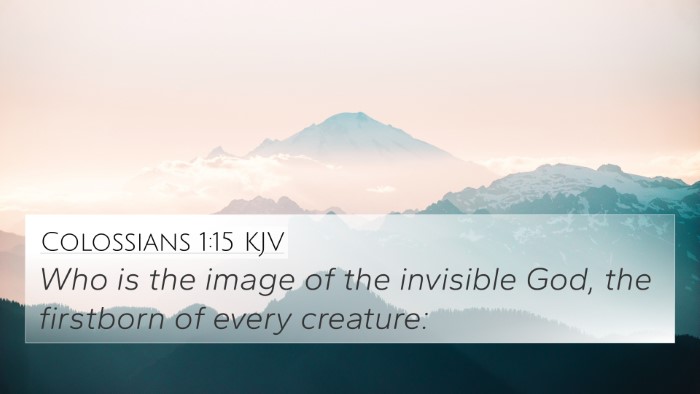Understanding John 6:46
John 6:46 states: "Not that anyone has seen the Father except he who is from God; he has seen the Father."
This verse emphasizes the unique divine relationship between Jesus and the Father. To delve deeper into its meaning, we summarize insights from recognized public domain commentaries.
Meaning and Interpretation
Matthew Henry notes that this verse makes a significant assertion about the nature of Jesus as the Son of God. Here, Jesus is depicted as the sole mediator who possesses an intimate understanding of the Father, a knowledge that is not accessible to anyone else due to the transcendence of God.
Albert Barnes elaborates that the verse also serves to bolster the divinity of Jesus, affirming that His insight into God is not merely theoretical but is rooted in His unique position as God incarnate. Barnes connects this perspective with the overarching theme of revelation throughout the Gospel of John.
Adam Clarke emphasizes the importance of divine revelation. He posits that men cannot claim to have seen God unless they have an intimate relationship with Christ, who fully embodies the nature of God. Clarke points out that such profound truth is essential for understanding the Christological foundations of the New Testament.
Thematic Connections
The themes in John 6:46 relate closely to other scriptures, illustrating the interconnectedness of biblical texts. Below are several pertinent cross-references:
- John 1:18: "No one has seen God at any time; the only begotten Son, who is in the bosom of the Father, He has declared Him."
- John 14:9: "Jesus said to him, 'Have I been with you so long, and yet you have not known Me, Philip? He who has seen Me has seen the Father; so how can you say, "Show us the Father"?'."
- 1 Timothy 6:16: "Who alone has immortality, dwelling in unapproachable light, whom no man has seen or can see, to whom be honor and everlasting power. Amen."
- Matthew 11:27: "All things have been delivered to Me by My Father, and no one knows the Son except the Father. Nor does anyone know the Father except the Son, and the one to whom the Son wills to reveal Him."
- Colossians 1:15: "He is the image of the invisible God, the firstborn over all creation."
- Hebrews 1:3: "Who being the brightness of His glory and the express image of His person, and upholding all things by the word of His power..."
- Exodus 33:20: "But He said, 'You cannot see My face; for no man shall see Me, and live.'
Cross-Referencing Biblical Texts
John 6:46 invites readers to explore a profound dialogue between Old and New Testament scriptures regarding the nature of God and revelation. The following methods can assist in exploring these connections:
- Bible concordance: Utilize tools that index words and phrases to find related scripture.
- Bible cross-reference guide: Guides can help map out thematic or narrative connections.
- Cross-reference Bible study: Engage in methods that compare verses within their broader context.
- Bible cross-reference system: Explore structured systems designed to link verses across the text.
- Inter-Biblical dialogue: Study the interplay between different books of the Bible that illuminate each theme or teaching.
Application in Study
When studying John 6:46, it is pivotal to understand not just its isolated meaning, but how it coheres with other scriptures. Here are some practical suggestions for engaging with the text:
- Finding cross-references: Look for verses that echo similar themes or ideas to understand the full scriptural narrative.
- Identifying Old and New Testament connections: This enhances understanding of the continuity in God’s revelation.
- Diving into detailed studies: Engage in a comparative analysis of Gospels to understand differing perspectives on Jesus’ divinity.
- Engage in thematic studies: Explore how concepts such as revelation, vision of God, and Christ's uniqueness play out across the text.
Conclusion
In conclusion, John 6:46 profoundly articulates the unique role of Jesus in revealing the Father. By employing tools for cross-referencing and exploring related scriptures, we can gain a richer understanding of its implications. This practice not only enhances comprehension of the text but also deepens spiritual insight into the nature of God and His relation to humanity through Christ.














